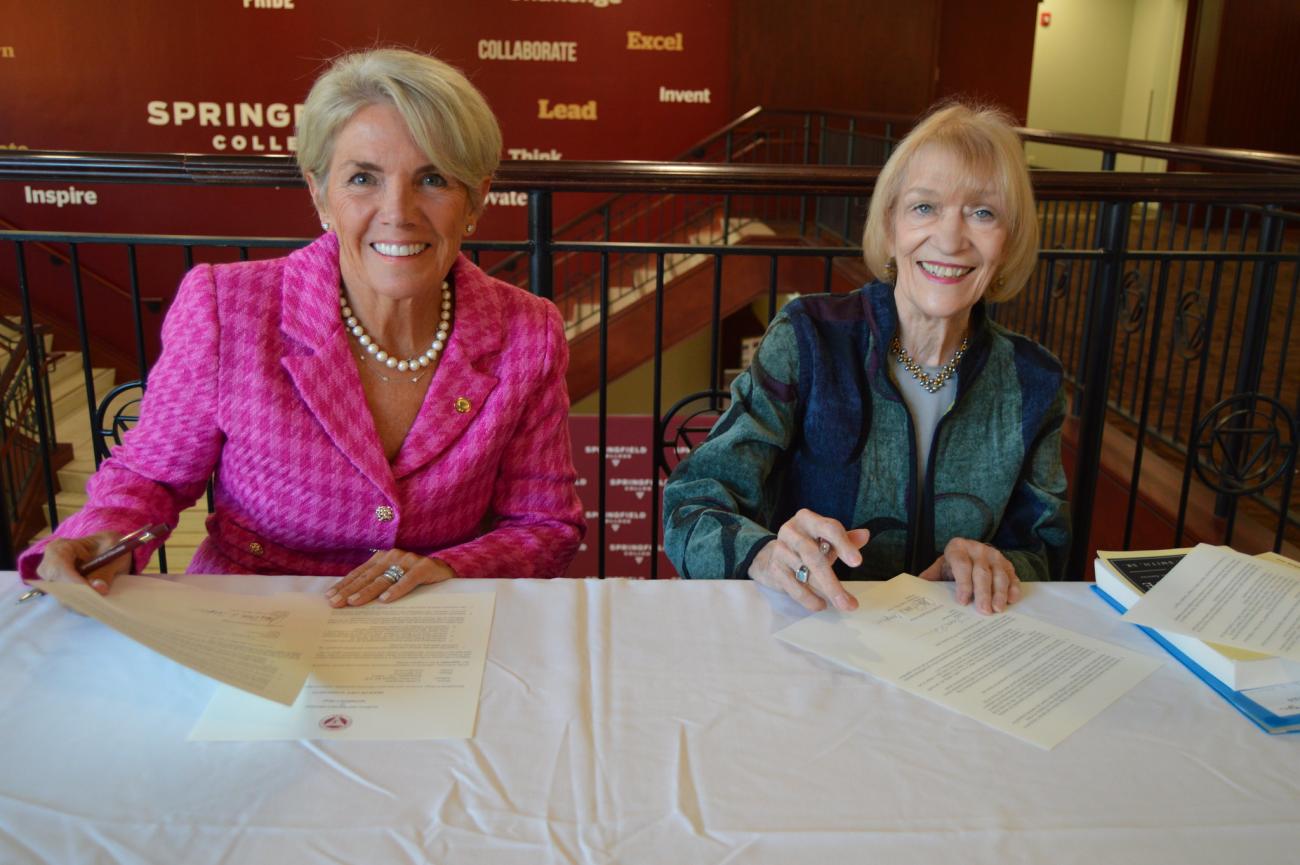Debut and Presentation of the Dan Smith '60 Papers

At left, Springfield College President Mary-Beth Cooper and Dan Smith '60 widow Loretta Neumann officially sign the agreement to have Smith's collection hosted in the archives on campus.
By: Patrick Fergus
@Fergus5Fergus
Sometimes when a person passes away, there is a concern about making sure their accomplishments and feats live on. In the case of Dan Smith ‘60, his legacy is cemented.
Smith, who passed away in 2022 at the age of 90, was a lifelong activist.
Smith led enough of a life for two people. He participated in the Selma-to-Montgomery marches, joined the army and served as a medic during the Korean War, developed anti-poverty and emergency medical services programs in the face of systemic racism from the federal government, and eventually became the Head Usher at the Washington National Cathedral.
He was also believed to be the last remaining child of an enslaved person at the time of his death, according to the Equal Justice Initiative.
His time on campus in the late 1950’s was marked by his prowess as a student-athlete and active president of the student council.
During Homecoming 2024, a large collection of Smith’s personal belongings, documents and artifacts were delivered back to Springfield to be perpetually preserved in the school’s archives. A brief ceremony took place in the Campus Union, where the collection was set up in the rotonda and members of Smith’s family were in attendance.
Jeffrey Monseau, the college’s archivist, worked with Dan Smith’s wife, Loretta Neumann, on a year-long process of sending about thirty boxes worth of Smith’s records to the school.
“In discussions with myself and her, we decided what she wanted to donate,” Monseau said.
One of Monseau’s main recommendations was to not split up Smith’s collection, as he also attended Tuskegee Institute in Alabama.
“His life was so impactful that it was my recommendation that she should keep the collection together,” said Monseau. “As we worked together…sort of decided it’s better to have them all together so that you can see his whole trajectory of life.”
Among the impressive collection that the college received is Smith’s personal suitcase, which contains first-hand accounts of his civil rights work in Alabama, and an album of his photographs from his service in Korea, which Monseau says is a valuable addition to the archival resources.
“I can see teachers and students using these,” said Monseau. “We have materials from the World Wars, but I had nothing to offer for the Korean War.”
Above all though, Smith’s contributions build on the existing strength of civil rights records the college has developed over its history. Smith’s struggles against racial inequality can be shown through his artifacts, like a “colored entrance” sign and a photo of his home after an arson attack from the Ku Klux Klan.
His unique story is a consummate embodiment of Springfield’s humanics philosophy.
“Everything goes back to spirit, mind and body…in service of others,” said Monseau. “Nowhere is that better seen than in his life.”
It’s Monseau’s goal that down the line Smith will receive his own exhibit in the Springfield College museum located in Judd Gymnasia. The boxes that now fill the shelves of the archives registry office need to be carefully sorted through, arranged and transcribed so they can be uploaded to the online database.
The priority is to make sure that all the materials are handled safely and securely, and to reduce any chance of something being damaged or lost.
“The next steps for this collection is to have someone come in and account for all of these materials,” Monseau said.
It’s a job not just one man can accomplish, but Monseau is hopeful that display will eventually be realized.
Smith was also formally honored at the Alumni Awards Ceremony and Reception, where he was inducted into the Hall of Alumni of Color Achievers.
